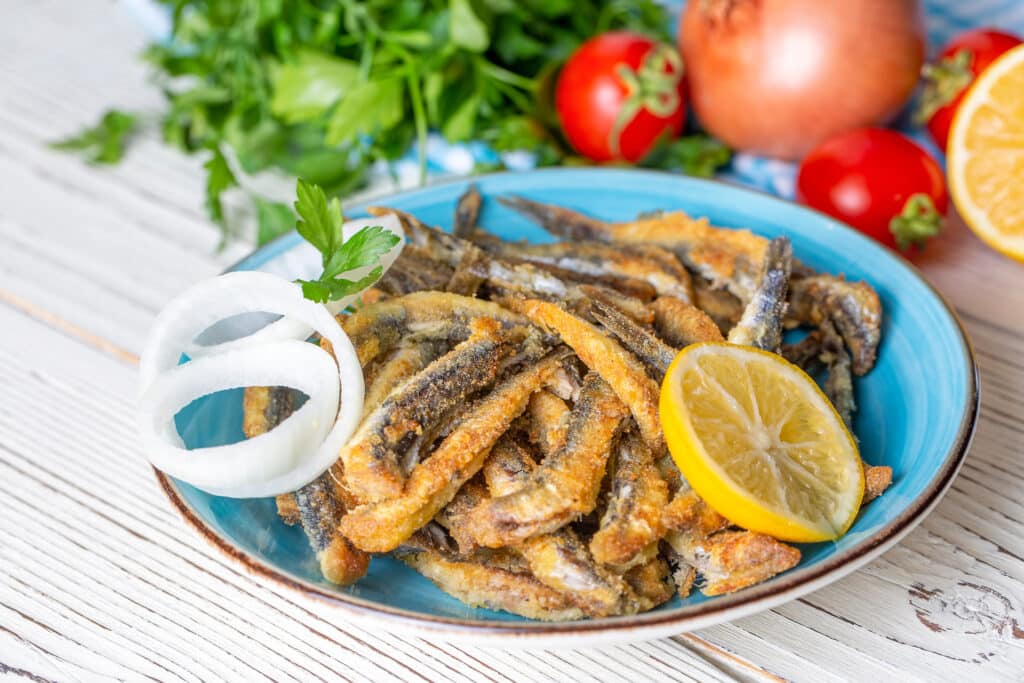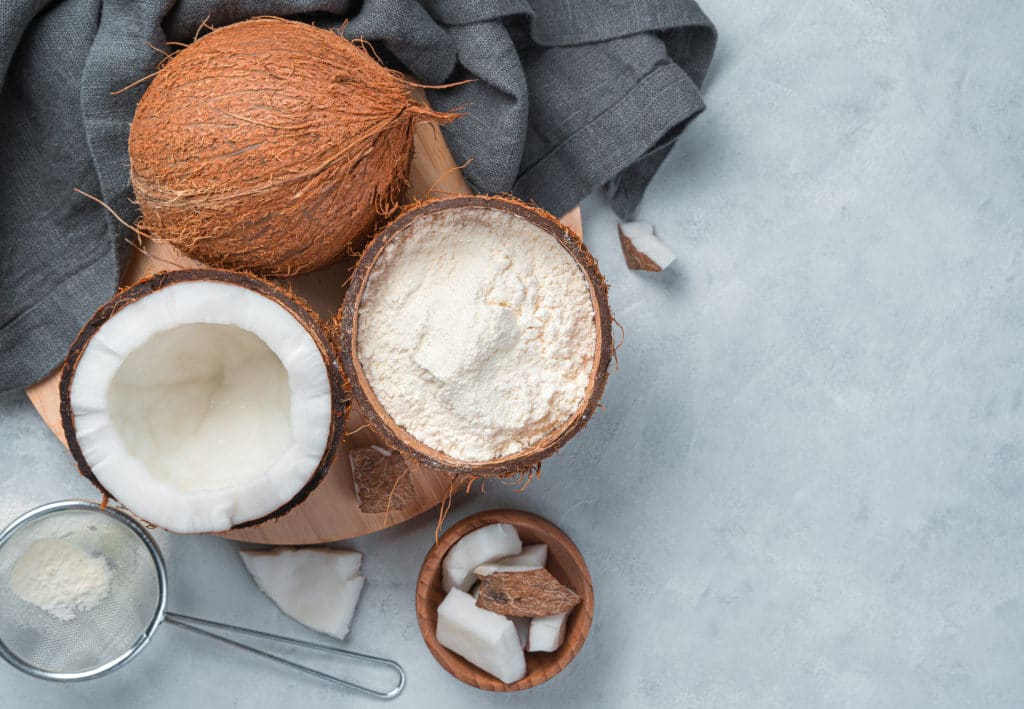Home » Eat Empowered » The Final Answer on How Much Fat to Eat Each Day
If you’d asked any American 25 years ago how much fat they should eat each day, the likely answer would have been, “as little as possible, of course!” As a refresher, this was the era of fat-free cookies, Olestra-cooked chips and snacks made “skinny” in any and all of the ways, while diet books and food companies led us to believe that fat was the enemy.
Thankfully, we’ve come a long way since then in our nutrient science. Today, research shows us that fat is not only OK but that fat is necessary. “In fact, fat is your friend,” says Nutritious Life Founder Keri Glassman, MS, RD, CDN. “Fat can be a scary macronutrient for the health conscious eater, but fat doesn’t make you fat.” Fat is vital for several body processes (more on that later), plus it makes food taste even better.
Read on to learn more about how much fat per day can be healthy, how much saturated fat per day is A-OK (hint: it’s more than zero), plus how to add healthy fats to your diet for ample fuel from morning to night.
RELATED: 3 Reasons Why I Love Fat
What is Fat, Exactly?
Fat is one of three essential macronutrients, or vehicles for energy, for the body. The others include:
- Carbohydrates, which deliver 4 calories per gram
- Protein, which deliver 4 calories per gram
- Alcohol is a fourth and non-essential nutrient (meaning your body doesn’t need it to survive), which delivers 7 calories per gram
Fat, conversely, clocks in at 9 calories per gram, making it the most calorie-dense of the bunch. (No wonder fat was villainized in the calorie-counting ‘90s.)
The truth is, our bodies need a mix of all essential macronutrients to complete normal body functions, and fat is especially productive as:
- An energy source, (remember those 9 calories per gram we just mentioned?)
- A tool to assist in and regulate reproductive hormone and steroid production
- An important factor in keeping brain function optimal and boosting mood
- A building block of cell walls
- A tool to help our bodies absorb fat-soluble vitamins, including A, D, E and K
- A source of essential fatty acids that our bodies can’t make on their own
- Insulation to protect the organs and skeleton from cold temperatures or severe injuries in case of a fall, for example
- A way to add flavor to meals and snacks and make eating more satisfying
As you can see, fat has some pros (all of those body benefits, not to mention how amazing it tastes!) and cons (the high calorie-per-gram ratio which can lead to weight gain and higher cholesterol). Like anything in life, you can have too much of a good thing.
So the verdict on “how much fat per day is A-OK?” is actually, “it depends.” Your daily fat needs vary based on activity level, genetics and goals. And when it comes to fat, the most important thing to note is that quality matters, too, not just quantity.
Below is a primer on every type of dietary fat.
Total Fat
The National Institutes of Health (NIH)’s dietary reference intake (DRI) recommends that adults receive between 20% to 35% of total calories from fat. This works out to 44 grams to 77 grams of fat per day, based on a 2,000-calorie daily diet.
“We need a good amount of healthy fat to function best and to maintain a healthy body weight but it’s easy to go overboard,” says Glassman. “ I recommend about 30% of daily calories come from this marvelous macronutrient.”
Total fat is composed of all the subtypes of fat added together, and since they each differ based on their impact on the body, the DRI amount varies. Here’s a breakdown:
- Monounsaturated fat: 15% to 20% of total daily calories
- Polyunsaturated fat: 5% to 10% of total daily calories
- Saturated fat: less than 10% of total daily calories
- Trans fat: 0% of total fat per day*
- Cholesterol: less than 300 milligrams per day
* Trans fatty acids are created when a liquid fat is transformed into a solid fat through “hydrogenation,” which extends the shelf life of items such as shortening, margarine, coffee creamer and packaged baked goods. Since these were proven to be so detrimental to heart health, the World Health Organization (WHO) aims to eliminate these from the global food supply chain in 2023. We’re omitting them from this list for that reason, but if you see trans fats on a nutrition label still, steer clear.
RELATED: How to Get Back on Track With Your Diet
Many foods contain a combination of fat types, but we’ll list examples of healthy fat foods that contain mostly fat from that particular category.
Monounsaturated Fat
How much fat per day: 15% to 20% of total daily calories
Monounsaturated fats come from plant-based sources, and may reduce chronic inflammation within the body. As a result, they may lower the risk for heart disease. They are usually liquid at room temperature if in oil form. Sources include:
- Olive oil and olives
- Nuts such as almonds, hazelnuts, pistachios and pecans
- Avocado
- Seeds such as pumpkin and sesame
Polyunsaturated Fat
How much fat per day: 5% to 10% of total daily calories
These fats come from plant- and animal-based sources, and are usually liquid at room temperature in oil form. Omega-3 fats are one type of polyunsaturated fat that are especially beneficial for reducing chronic inflammation and supporting heart and brain health. Unsaturated fats of both kinds (mono and poly), in moderation, have been proven to have positive impacts on health, including lowering total cholesterol and contributing much-needed vitamin E, according to the American Heart Association (AHA).
Sources of polyunsaturated fats include:
- Fish such as salmon, herring, mackerel and anchovies
- Seeds such as chia and flaxseeds
- Walnuts
- Plant and vegetable oils such as safflower, sunflower, corn and soybean** (use only organic and cold-pressed)
**Overly processed oils, such as sunflower, soybean, vegetable, cottonseed and safflower, can be damaging for a couple of reasons. First, the quality of the oil can be degraded by the processing technique including heat and chemicals. And second, the proportion of omega-6 to omega-3 fatty acids skews the wrong way. Most Americans need more omega-3s (versus omega-6s), and these oils are heavy on omega-6s and should be used more sparingly. We suggest buying organic and cold-pressed when possible, if you’re going to use these in your cooking.
RELATED: Is Canola Oil Bad For You?

Saturated Fat
How much fat per day: less than 10% of total daily calories
Saturated fat sources are typically solid or waxy in consistency at room temperature, and come from animal products or tropical oils. Too much saturated fat has been correlated with higher levels of LDL cholesterol (the bad stuff) in the blood and more chronic inflammation.
On a 2,000-calorie-per-day diet, 10% of calories would equate to about 22 grams of saturated fat per day, maximum. If you have been diagnosed with high LDL cholesterol, the AHA suggests limiting consumption to 5% to 6% of total daily calories, or about 13 grams of saturated fat per day.
“Saturated fats can be bad for your health,” says Glassman, “but there is a place for some in a healthy diet since they are important for the health of your heart, bones and liver, and for immune system and brain function. Think of them as an in-between fat (not great for you, but beneficial in small amounts).”
Sources include:
- Full-fat dairy products
- Meats such as beef, lamb, pork, veal
- Processed meats, such as bacon and salami
- Fatty fish
- Nuts
- Coconut
- Chocolate
- Tropical oils, such as palm oil, palm kernel oil and coconut oil

Coconut: An important point to note is that while coconut is high in saturated fat, it’s fatty acid profile is full of protective medium chain triglycerides (MCTs). MCTs are rapidly broken down by the body and go straight to the liver where they can be used as an instant energy source and are less likely to be stored as fat. They’re also linked to lower weight, appetite control, improved immunity, increased energy and decreased heart disease.
RELATED: 3 Incredible Benefits of Coconut Oil
Cholesterol
How much fat per day: less than 300 milligrams per day
Since some cholesterol is necessary to carry out normal bodily functions, cholesterol is manufactured by the liver. It is also found in animal-based foods. Fascinatingly, saturated fat intake appears to have more of an impact on the body’s total cholesterol and bad (LDL) cholesterol, but it’s still wise to keep tabs on overall cholesterol intake. Again, everything in moderation.
Sources include:
- Liver
- Eggs
- Shellfish

So How Much Fat Per Day is Enough (and Not Too Much)?
Since a gram of fat has more than twice as many calories as a gram of protein or carbohydrates, too much fat per day can lead to weight gain. But as we mentioned, your body performs best—and receives enough fuel!—when you feed it between 20% and 35% of daily calories from fat.
The current scientific consensus is that we should aim to get most of our fat from unsaturated sources, but some foods with saturated fats, such as whole-fat dairy, eggs, coconut, and dark chocolate—come packed with other beneficial components like vitamins, minerals and antioxidants. So the definitive answer on how much fat per day is best should also include a bold disclaimer: “everything in moderation”—and some saturated fats are beneficial, too.
RELATED: How to Cleanse by Eating Healthy Food
Try This Meal Plan Full of Healthy Fat Recipes
Quality of fat per day matters as much as the quantity of fat per day. To showcase how delicious and easy it can be to spread out healthy fat sources from morning until night, try this well-balanced menu with a variety of just enough healthy fats.
- Breakfast: Pumpkin Spice Chia Pudding
- Snack: Pesto Hummus with Broccoli Rabe with carrot sticks
- Lunch: Cranberry Walnut Salad with grilled chicken or drained and rinsed beans
- Snack: Roasted Curry Chickpeas
- Dinner: Broiled Salmon with Spinach
- Dessert: Grain-Free Avocado Brownie
(Images: Shutterstock)
Health, Food, Wine and Relationship Writer + Cooking and Wine Event Host
RECENT ARTICLES

Want a sneak peek inside the program?
Get FREE access to some of the core training materials that make up our signature program – Become a Nutrition Coach.
Get Access"*" indicates required fields
 Eat Empowered
Eat Empowered














































































































































































































































































































































































































































































































































































































































































































































































































































































































































































































































































































































































































































































































































































































































